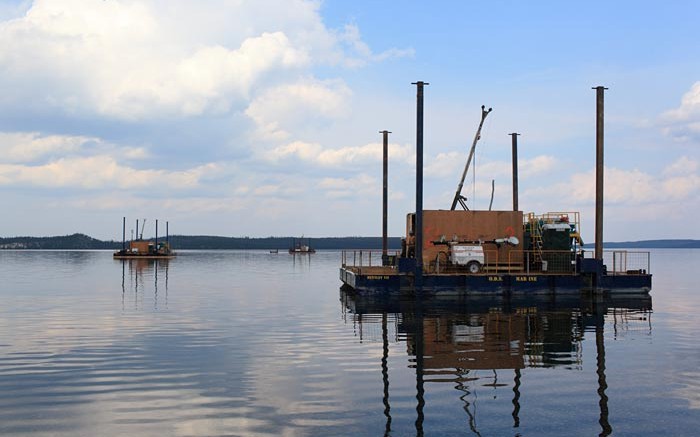VANCOUVER — The dust is settling for Fission Uranium (TSX: FCU; US-OTC: FCUUF) after a failed merger with Lukas Lundin’s Denison Mines (TSX: DML; NYSE-MKT: DNN), but the company can’t move on just yet, due to an activist retail shareholder group intent on a proxy battle.
Denison and Fission scuppered their friendly, proposed all-share deal after Fission could not generate enough shareholder support to meet two-thirds of approval.
Fission’s main asset is the high-grade Patterson Lake South (PLS) uranium discovery in Saskatchewan’s Athabasca basin.
According to CEO Dev Randhawa, Fission got into the “mid-50%” range of votes, but could not clear the hurdle due to opposition from retail shareholders. The merger fell through despite Lundin making a trip to Toronto in October to sell the concept.
“Honestly, I had a pretty good idea the deal wasn’t going to go through early on. I think the preliminary economic assessment (PEA) had a big impact simply because it was so strong,” Randhawa said during an interview. “It’s an independent document, and you have to wait until it’s finished to really get a look at the details of the project. Suddenly we had perhaps the cheapest producing uranium asset in the world, based on operating costs.”
Fission released the PEA two months after announcing its intentions to merge with Denison. The study indicated that PLS could be production at a cost of US$14 per lb. U3O8, which would put it in the lowest-cost quartile for uranium assets. The project would require $1.1 billion to develop, and features a $1-billion post-tax net present value and a 34.2% internal rate of return, assuming an optimistic US$64 per lb. uranium oxide.
“Had the merger gone through, we would have been a bigger and better company, and a go-to name in the uranium space. After Cameco there quite simply are not that many options for investors and institutions looking for exposure to our business,” Randhawa added.
After the Fission–Denison merger collapse, an activist retail shareholder collective emerged that called itself “FCU OverSight.” The group has only released two names from its membership: Blair Lockhart, a former legal counsel at the B.C. Securities Commission who lists as an advisor; and Jim Gifford, a retail shareholder and spokesperson.
Fission’s board adopted an advanced-notice bylaw, which says any nominations to the company’s board of directors must be filed within 30 days of its annual general meeting (AGM). Since Fission’s AGM is scheduled for Dec. 15, FCU OverSight must get its proxy details in order by Nov. 15 to force a vote.
The Northern Miner contacted Gifford by phone and email, but received no details on FCU OverSight’s intentions or strategy. Gifford did say the group is trying to put together more director nominees in time for the deadline.
Randhawa hasn’t received any more details or shareholder lists from the dissident group, but added that FCU OverSight had little do with the “no” vote that defeated the Denison merger.
“It’s business as usual — nothing has changed on the ground,” Randhawa continued. “We’ve never stopped drilling at PLS, and we’ve continued to have a steady stream of assays. There’s a new structure we really like along a parallel conductor, 500 metres north of the main deposit. We can’t expect anything more from our technical team, and we’re an exploration company — so that’s how people should measure our success.”
In October Fission released its latest assays from PLS, which included two holes on the core R600W deposit and six holes at the R780E zone. Highlights include: 5 metres of 11.1% U3O8 from 137 metres deep in hole 15-408 at R600W, and 6 metres of 9% U3O8 from 234 metres deep in hole 15-416 at R780E.
Fission shares have traded within a 52-week window of 57¢ to $1.38, and closed at 60¢ per share at press time.
The company reported working capital of $19 million at the end of June, and has 386 million shares outstanding for a $231.7-million market capitalization.
“Markets have been frustrating,” Randhawa said. “I was surprised with how little traction our PEA generated in terms of share price. Now that the Denison situation is in our rearview, we can hopefully get full attention for the quality of PLS as an asset.”


Be the first to comment on "Fission powers forward after Denison deal dies"